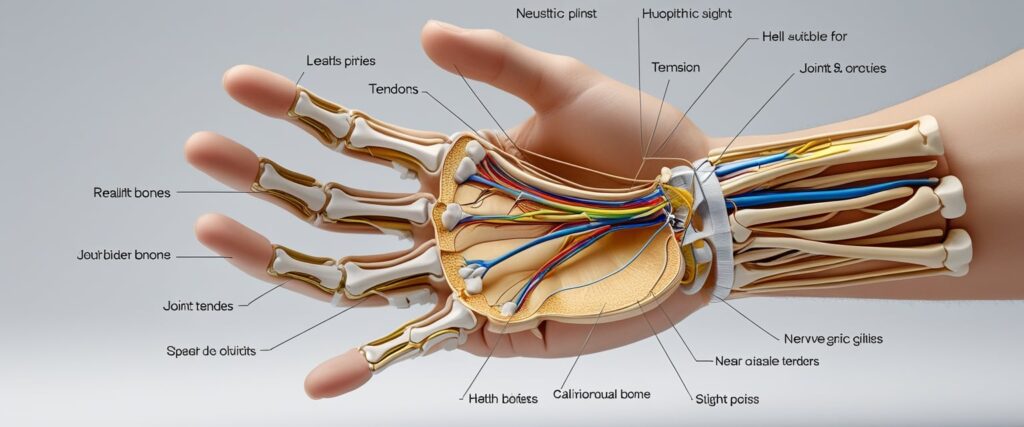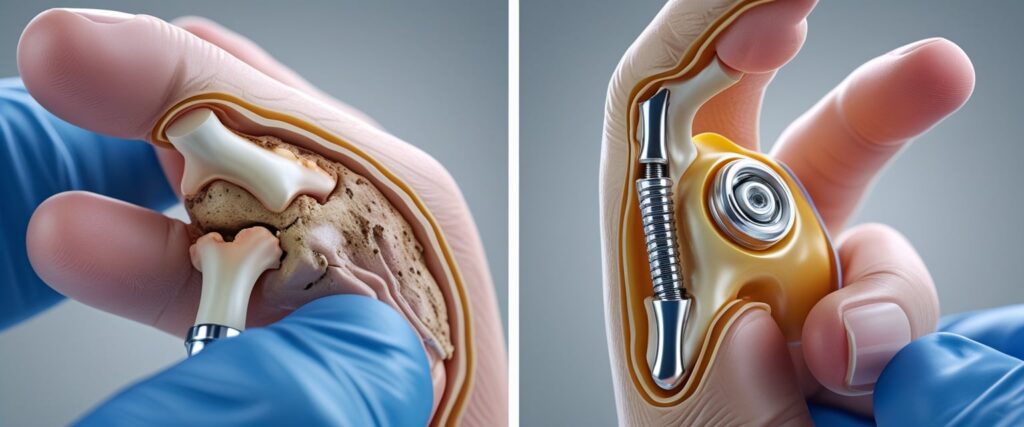Hand and wrist pain can disrupt even the simplest daily tasks, from buttoning a shirt to typing an email. For those facing persistent discomfort or injury, understanding the available surgical options is crucial. In this guide on “7 Common Types of Hand Surgery Operations Explained,” readers will discover the key procedures that help restore movement, strength, and comfort. From carpal tunnel release to nerve and tendon repair, each surgery plays a vital role in improving quality of life.

By exploring “7 Common Types of Hand Surgery Operations Explained,” you’ll gain clear insights into how modern techniques and rehabilitation strategies support lasting recovery and better hand function.
7 Common Types of Hand Surgery Operations Explained
Hand and wrist pain can make simple tasks like gripping a cup or typing on a keyboard difficult. When pain or injury limits movement, surgery may help restore function and comfort. Understanding the most common types of hand surgery helps people make informed choices about their treatment and recovery.
Hand surgery addresses many conditions, from nerve compression and tendon damage to fractures and arthritis. Each procedure has a specific purpose—some relieve pain, others rebuild strength or improve motion. Knowing what these surgeries involve and what recovery looks like can ease uncertainty and support better healing.

This guide explains seven common hand surgery operations, their importance, and how they help restore mobility. It also explores advanced techniques and recovery steps so individuals can return to daily activities with greater confidence and comfort.
Overview of Hand Surgery and Its Importance
Hand surgery helps restore movement, reduce pain, and improve function in the hands and wrists. It addresses injuries, deformities, and chronic conditions that affect everyday activities such as gripping, writing, or lifting objects.
What Is Hand Surgery?
Hand surgery is a specialized field that treats the bones, joints, tendons, ligaments, and nerves of the hand and wrist. Procedures range from carpal tunnel release and tendon repair to joint replacement and fracture fixation. These operations aim to correct structural problems and restore proper movement.
Surgeons may use microsurgical techniques to reconnect small blood vessels or nerves. Some procedures, such as arthroscopy, use a small camera to diagnose and treat joint issues through tiny incisions.

Common conditions treated include arthritis, trigger finger, Dupuytren’s contracture, and nerve injuries. According to the Hand and Wrist Institute, surgery can also involve skin grafts or flaps to replace damaged tissue after trauma.
Key Goals of Hand Surgery
The main goals of hand surgery are to restore function, reduce pain, and improve appearance. By repairing damaged structures, surgeons help patients regain the ability to perform daily tasks safely and comfortably.
Typical objectives include:
- Restoring motion: Releasing tight tendons or joints to increase flexibility.
- Reducing pain: Removing inflamed tissue or stabilizing arthritic joints.
- Rebuilding structure: Fixing fractures or reconstructing soft tissue to support normal hand shape.

Successful outcomes depend on the type of injury, the patient’s health, and adherence to post-surgery therapy. Early rehabilitation and physical therapy often play a key role in regaining strength and coordination after hand and wrist surgery.
Role of Hand Surgeons and Orthopedic Surgeons
A hand surgeon or orthopedic surgeon specializes in diagnosing and treating hand and wrist conditions. These physicians complete advanced training in both surgical and nonsurgical care, often working with hand therapists for rehabilitation.
They evaluate the severity of injuries, recommend treatment options, and perform operations when conservative care fails. In complex cases, they may use microsurgery to reconnect nerves or reattach severed fingers.

Specialists at institutions like Stanford Health Care and Johns Hopkins Medicine emphasize that collaboration between surgeons, therapists, and patients ensures the best recovery and long-term function.
Essential Hand Surgery Procedures
Hand surgery focuses on restoring movement, reducing pain, and improving function in the fingers, hand, and wrist. These procedures address nerve compression, tendon restriction, tissue thickening, and cyst formation that interfere with daily tasks.
Carpal Tunnel Release Surgery
Carpal tunnel release surgery treats carpal tunnel syndrome, a condition caused by pressure on the median nerve as it passes through the wrist. Symptoms often include numbness, tingling, and weakness in the thumb and fingers.
During the procedure, the surgeon cuts the transverse carpal ligament to relieve nerve compression. This can be done through open or endoscopic techniques, depending on the severity of symptoms.
Patients may notice improvement in sensation within days, although full recovery of grip strength can take several weeks. According to UK Hand and Wrist Surgery, minimally invasive approaches help reduce scarring and promote faster healing.

Post-surgery care usually includes gentle finger exercises and temporary wrist splinting to prevent stiffness. Early movement supports better long-term outcomes.
Trigger Finger Release Surgery
Trigger finger release surgery corrects a condition where a finger or thumb locks in a bent position due to narrowing of the tendon sheath. The affected tendon catches when moving through its tunnel, often causing pain or a snapping sensation.
The surgeon makes a small incision in the palm and releases the A1 pulley, allowing the tendon to glide smoothly. This outpatient procedure is often performed under local anesthesia.

According to the Hand and Wrist Institute, most patients regain normal motion soon after surgery, with tenderness at the incision improving within a few weeks.
A short course of hand therapy may be recommended to restore flexibility and prevent scar tissue buildup.
Ganglion Cyst Removal Surgery
Ganglion cysts are fluid-filled sacs that form along the wrist or finger joints. They can cause discomfort, limit motion, or press on nearby nerves. When aspiration fails or the cyst recurs, ganglion cyst removal surgery becomes an option.
The procedure involves excising the cyst along with its stalk to reduce recurrence risk. Surgeons take care to avoid injury to nearby tendons and nerves.

As described by Modern Orthopedics of New Jersey, many cyst removals are done under local anesthesia and allow quick return to light activities.
Patients may wear a soft dressing or splint for a few days, followed by gradual wrist movement to maintain flexibility.
Dupuytren’s Contracture Surgery
Dupuytren’s contracture causes thickened tissue in the palm to pull fingers inward, restricting extension. In advanced cases, Dupuytren’s contracture surgery, often called a fasciectomy, removes the fibrous cords to restore hand function.
The surgeon carefully separates and excises the diseased tissue while preserving nerves and tendons. In some cases, limited-incision or needle techniques are used for less severe contractures.

The South Shore Orthopedics team notes that recovery includes splinting and hand therapy to maintain finger extension and prevent recurrence.
Improvement in hand mobility is usually noticeable soon after surgery, though full recovery depends on the extent of the contracture and adherence to post-operative exercises.
Advanced Hand Surgery Operations
Specialized procedures restore movement, strength, and feeling in the hand after serious injury or disease. These operations often involve precise techniques such as microsurgery and joint reconstruction to repair tissue and improve long-term function.
Tendon Repair Surgery
Tendon repair surgery reconnects torn or damaged tendons to restore motion in the hand or wrist. Surgeons often perform this operation after deep cuts, sports injuries, or trauma that prevents normal finger movement.
There are three main types: primary repair, delayed repair, and graft repair. Primary repair occurs soon after injury, while delayed repair may use a tendon graft from another part of the body.

Patients usually wear a splint or cast for several weeks to protect the repair. Early, guided movement helps prevent stiffness and scarring. According to the Hand and Wrist Institute, specialized hand therapy can improve strength and flexibility after surgery.
Nerve Repair Surgery
Nerve repair restores sensation and muscle control following nerve injuries from cuts, fractures, or crush trauma. Surgeons may reconnect the nerve ends directly or use a nerve graft when a gap exists.
Microsurgery tools and magnification make it possible to align tiny nerve fibers accurately. This precision helps the nerve heal and improves the chance of regaining feeling.

Recovery can take months because nerves grow slowly—about one inch per month. Patients often need physical therapy and sensory re-education to retrain the brain to recognize new nerve signals. The Stanford Health Care guide notes that early repair and careful rehabilitation improve long-term outcomes.
Arthritis and Joint Replacement Surgery
When arthritis severely damages finger or wrist joints, arthroplasty or joint replacement surgery can reduce pain and restore movement. Surgeons replace the worn joint surfaces with silicone, metal, or plastic implants.
This operation benefits patients with rheumatoid or osteoarthritis who no longer respond to medication or splints. The Hand and Wrist Institute explains that joint replacement surgery allows smoother motion and better grip strength.

Post-surgery therapy focuses on gentle stretching, gradual strengthening, and avoiding stress on the new joint. Most patients regain improved hand function within several months, depending on the joint replaced and the extent of arthritis.
Hand and Wrist Fracture Surgeries and Recovery
Hand and wrist fractures often require surgical repair to restore bone alignment, joint function, and grip strength. These procedures focus on stabilizing broken bones, minimizing stiffness, and supporting proper healing through guided rehabilitation.
Hand Fracture Repair
A hand fracture occurs when one or more of the small bones in the hand break due to trauma or impact. Surgeons may use pins, screws, or plates to hold the bones in place while they heal.
The procedure depends on the fracture’s location and severity. For stable breaks, a cast or splint may be enough. Complex or displaced fractures often need open reduction and internal fixation (ORIF) to realign and secure the bones.

Patients usually regain movement within weeks, though full recovery can take several months. According to South Shore Orthopedics, surgery helps prevent long-term stiffness and deformity when conservative care fails.
Wrist Fracture Surgery
Wrist fractures often involve the radius, the larger forearm bone near the base of the hand. When the bone shifts out of position, wrist surgery may be required to restore alignment and stability.
Surgeons may perform closed reduction and fixation or open reduction depending on the break’s complexity. Devices such as plates, screws, or external fixators stabilize the wrist while the bone heals.

After surgery, the wrist is usually immobilized for several weeks. Light movement starts once the surgeon verifies bone stability. The Fort Worth Hand Center notes that minimally invasive techniques can shorten recovery time and reduce scarring compared to traditional open procedures.
Post-Surgical Physical Therapy
Physical therapy plays a key role in regaining strength, range of motion, and coordination after hand or wrist surgery. Therapy often begins with gentle stretching and progresses to grip and resistance exercises.
A typical program includes:
- Range-of-motion exercises to prevent stiffness
- Strength training for muscles around the injury
- Scar management to improve flexibility and comfort

Therapists adjust routines based on pain levels and healing progress. As explained by the Hand and Wrist Institute, consistent therapy helps patients return to normal activities safely and with better long-term function.
Conclusion
When pain or injury affects your hand’s ability to function, surgery can make all the difference. The procedures detailed in “7 Common Types of Hand Surgery Operations Explained” showcase how medical advancements can repair damage, relieve pain, and restore mobility.
Whether it’s tendon repair, joint replacement, or fracture fixation, each operation aims to help patients regain confidence in their daily lives. By learning about “7 Common Types of Hand Surgery Operations Explained,” individuals can make informed decisions about treatment and recovery—empowering them to return to the activities they love with strength, comfort, and ease.
Frequently Asked Questions
What are the different types of hand surgery?
Hand surgery includes several procedures to repair or restore hand and wrist function. Common types are:
- Carpal Tunnel Release: Relieves pressure on the median nerve.
- Tendon Repair: Fixes torn or damaged tendons.
- Nerve Repair: Restores nerve function after injury.
- Fracture Repair: Aligns and stabilizes broken hand or wrist bones.
- Trigger Finger Release: Frees a stuck finger tendon.
- Dupuytren’s Contracture Surgery: Removes thickened tissue restricting finger movement.
- Joint Replacement (Arthroplasty): Replaces damaged joints, often in arthritis cases.
What are the types of surgical operations?
There are four main types of surgical operations based on purpose:
- Diagnostic Surgery – To identify a disease (e.g., biopsy).
- Curative Surgery – To remove or correct a problem (e.g., tumor removal).
- Reconstructive Surgery – To restore form or function (e.g., plastic or hand surgery).
- Palliative Surgery – To relieve symptoms without curing (e.g., pain-relief surgery).
What are the top 3 riskiest surgeries?
The most dangerous surgeries due to complexity and complications are:
- Open Heart Surgery (e.g., Heart Bypass): High risk of bleeding, infection, or cardiac arrest.
- Brain Surgery (Craniotomy): Risk of brain damage, stroke, or infection.
- Spinal Surgery (Spinal Fusion): Risk of nerve injury or paralysis.
What is the number 5 most common orthopedic surgery?
The fifth most common orthopedic surgery is Shoulder Replacement Surgery.
It involves replacing the damaged parts of the shoulder joint with artificial implants to relieve pain and restore mobility — especially in arthritis or severe fractures.
